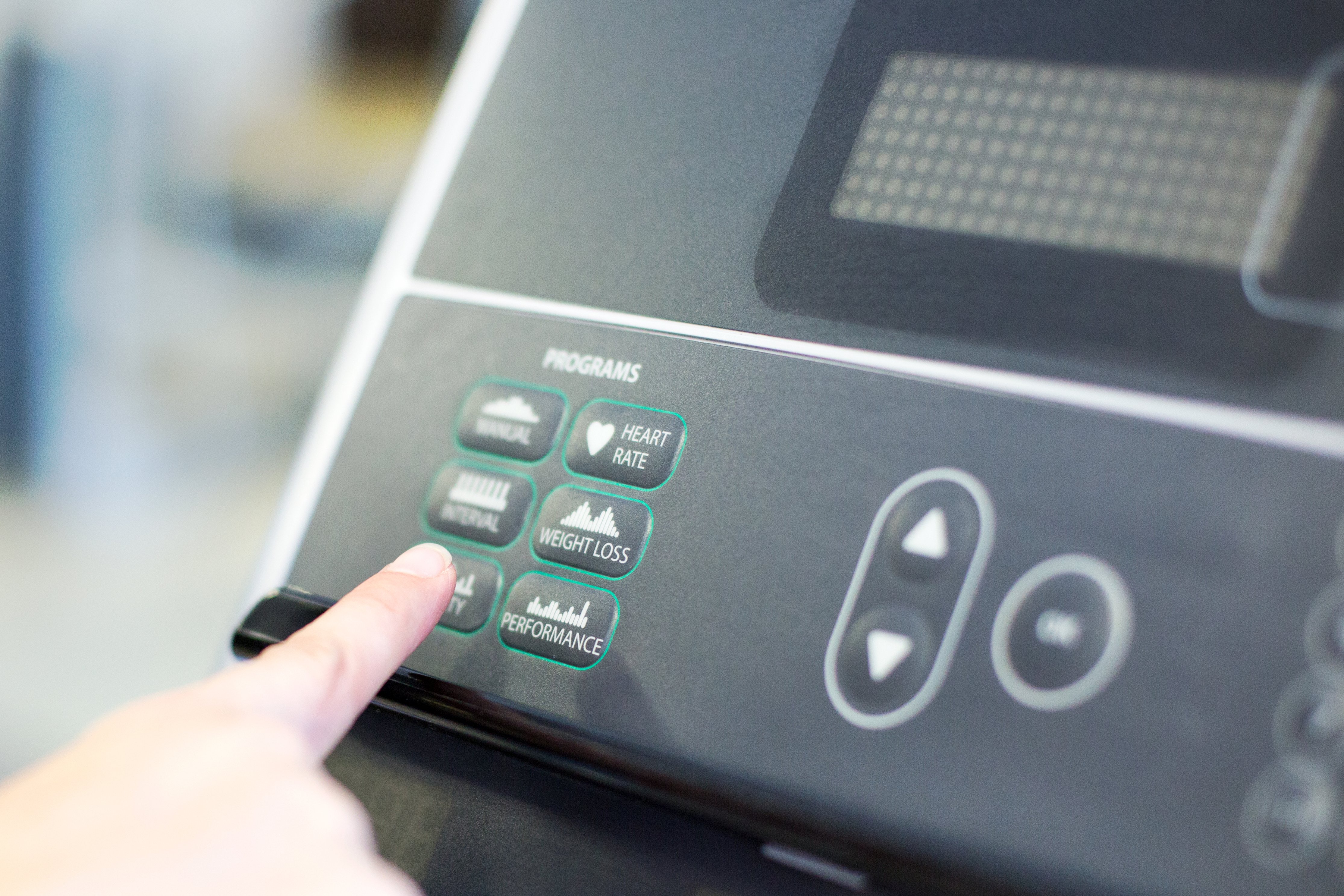Follow These 5 Tips to Train Your Brain for Better Runs
If you run regularly, you’ve heard the phrase “running is a mental sport.” Trying to push your body to physical limits rarely happens without some cooperation from your thoughts, if only to turn off the self-defeating ones.
Our brains can also limit our physical capabilities. Whether it’s a 400-meter sprint or a marathon, when things start to get uncomfortable, our brains are going to be the first thing to slow us down.
It’s simple. Our brains naturally seek pleasure and avoid pain. It’s why eating junk food and sitting on the couch is “easier” than eating your veggies and exercising (though once you form the habit, the healthy things become pleasurable and therefore easier!)
What if we could train our brains in such a way to help us actually run faster? While still listening to our bodies?
You can! Using these 5 brain training methods will help you enjoy your runs while still achieving better performance.
For best results, I recommend incorporating one method each week, slowly building up until you feel comfortable with all of them. (Bookmark this page to remind you.)
For tip #2, incorporate one new cue each week. You can either incorporate these alongside the other tips (doing tip #1 plus one cue from tip #2 the first week, for example) or tackle them individually.
Once you read the entire post, this will make more sense.
These methods can also be used with other forms of exercise besides running. I use them for my yoga practice, during Pilates, and when I’m doing spin or swimming. For those workouts, it’s not about making myself “faster” so much as it is about performing in the best way for my body on that day.

Okay, here are the 5 brain training tips!
1. Actively listen to what your body is saying
Matt Fitzgerald, a running coach and the author of Brain Training for Runners, calls all the feelings, thoughts, and emotions you receive from your body during a run as the “subjective feedback loop.”
The subjective feedback loop provides massive amounts of information that you might be overlooking or ignoring.
As someone who struggles with dialing back intensity, I know all too well the stubborn runner mindset. The calendar says run five miles! I must run all five, no matter what!
Fitzgerald says instead of letting a training calendar run our lives, we should listen to our subjective feedback loop. In other words, listen to your body.
Here are five guidelines for how to correctly listen to your subjective feedback loop and make for better running:
- Modify workouts depending on how you feel (energy levels, sleep levels, soreness)
- Don’t ignore pain
- Run by feel rather than the watch
- Monitor and control running form (for more on this, check out tip #2! Good running form can sometimes make a difference between injury and no injury)
- Stay positive 😊
2. Focus on Physical Cues to During Your Run
Focus on form technique cues during your runs. Not only will it help improve your running form, but it will give your brain something to focus on.
These cues are all from Fitzgerald’s own experience that he describes in Brain Training for Running. Pick one cue from the following list to focus on for all your runs that week. The next week, focus only on the next cue, and so on.
Falling Forward
Tilt your entire body slightly forward from the ankles up. The point of this cue is to prevent or correct overstriding. By leaning your entire body slightly forward, your feet will naturally land closer to your center of gravity.
Navel to Spine
Any yogis out there will know this one! (I go into detail about inner core engagement in this post.) By engaging your inner core as you run, you’ll increase your pelvis and low spine stabilization.
It’s very hard to keep your inner core engaged for an entire run, so when using this cue, try doing it for short bits of time. When starting, try to hold it for just a few minutes or for a short distance, like to the next stoplight or road marker.
Running on Water
Ever run or walk on thin ice? This cue is similar to that idea. Focus on taking light, quick steps to minimize ground contact while maintaining force. Keep your posture tight.
Pulling the road
Imagine you are running on a nonmotorized treadmill, and the force of your feet is pushing the road backward. With this cue, the idea is to focus on forward movement, creating a more powerful stride that shortens your contact with the ground.
Scooting
This cue is especially helpful for runners with a bouncy stride. Imagine that there is a low ceiling just above you. If you get too high off the ground, you’ll hit your head. The idea here is to focus on forward momentum rather than vertical movement.
(If this topic interests you, I highly recommend reading Fitzgerald’s full book Brain Training for Runners. He goes into a lot more detail about these cues and other ways to improve running form.)
3. Use Meditative Visualization
During the particularly hard parts of my marathon training, I used visualization – what I think of as “meditation in motion” – to help me stay calm and present in the mile I was in, rather than think about all the ones I had to go. I even used it during the actual race!
Below are a few visualization suggestions. Feel free to experiment with ones of your own too. The image you settle on should create feelings of calm and ease. See your image in your head, filling in all the details you deem necessary to elicit the right mood.
- A long stretch of empty, white sand beach with waves gently rolling in and out
- A sun-filled grassy meadow
- An empty, white-walled room that has sunlight pouring in through big windows
- A shining full moon in a cloudless sky
First practice recalling the image while not running. Then, once it feels easily accessible to you, actively recall the image during your run. Whenever your thoughts start to wander, come back to your image.
It probably will take some practice before you feel any benefit!
I’ve found this tactic works best for harder distance runs, like long runs or tempo runs. Practice first with recalling your image on easy runs.
4. Separate Suffering from Discomfort
You might be rolling your eyes at this one. I know if I had come across this advice during my collegiate running days, I’d be scoffing, “Discomfort is suffering!”
Not necessarily though. When we want to achieve certain running goals (or just push ourselves through a challenging workout, whether that’s running, weight-lifting or a barre class) we inevitably will experience some uncomfortableness. But we don’t have to react to the discomfort of running with a suffering mindset.
In a yoga class, you might hear the teacher say, “Notice if you’re experiencing pain or just discomfort.” Pain while running might be an ache in your knee or a sharp twinge in your hip. That’s the kind of pain we don’t ignore (referring back to tip #1 Listen to Your Body).
However, you probably will experience some discomfort at some point along your running journey. That’s how we build endurance and speed!
So, the next time you experience discomfort on a run, and you hear your brain shouting at you to stop or slow down, try to embrace the discomfort instead. Focus on your breathing and keep your shoulders relaxed. If you’ve practiced tips #2 and 3, use a running cue or your meditative visualization method.
Even if you can only do it for a minute, that’s a minute longer you ran at the uncomfortable speed rather than your slower, easy pace.
Like the others, this method takes a lot of practice. The first couple of times you try it, you might not be able to separate the discomfort from feelings of suffering at all. But trust me, if you keep at it, you’ll find your way there, and eventually you’ll be able to stay in a zone of discomfort for longer and longer periods (and it will feel less uncomfortable!)
5. Don’t Try So Hard
Less really can lead to more. This tip revolves around “brain strain” or trying too hard.
Have you ever experienced a run where everything feels effortless and you’re completely in the zone? You run faster and farther than you planned without trying.
Now, what was your brain doing during that run? Probably not much. It definitely wasn’t bombarding you with thoughts of “run faster, push, push, push.”
Sometimes those thoughts motivate us. But other times, they cause a mental frenzy that reveals itself physically with tight shoulders, a wonky gait, and a self-defeating mindset.
Even when I’m doing my treadmill interval workouts, I give myself room to chill out and not try so hard. Maybe that means going a little bit slower on some paces. But the couple seconds difference in pace leads to a much better mentality about running.
Then, when I’m about to do my next run, I’m not thinking about yesterday’s hard workout and how hard it was – I’m just looking forward to getting after it today.
By not trying so hard, you’ll leave room to try again tomorrow.





